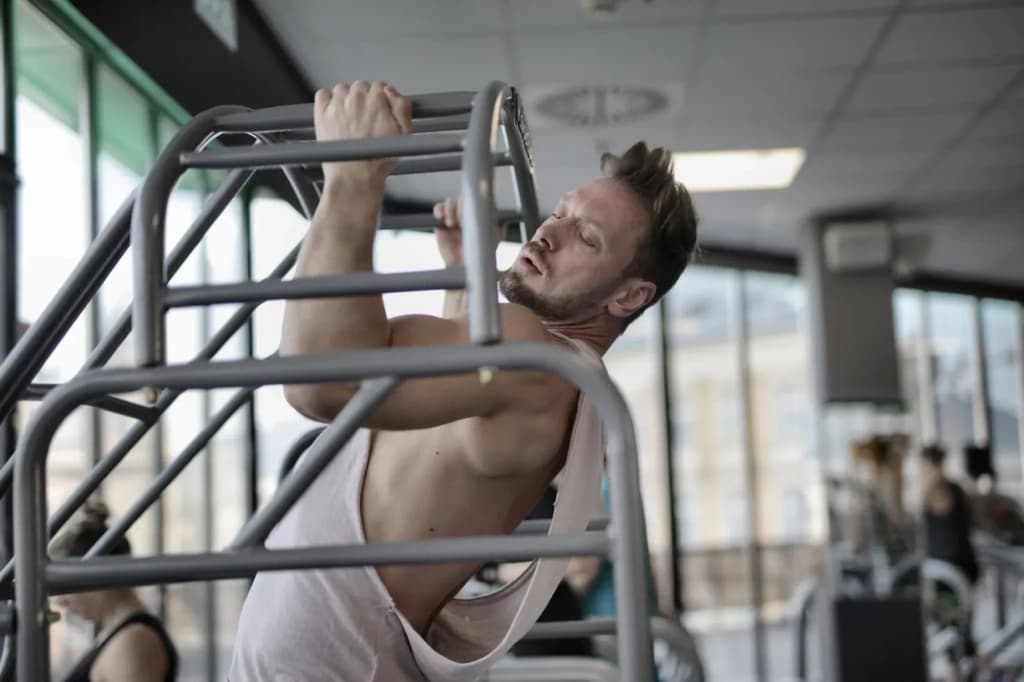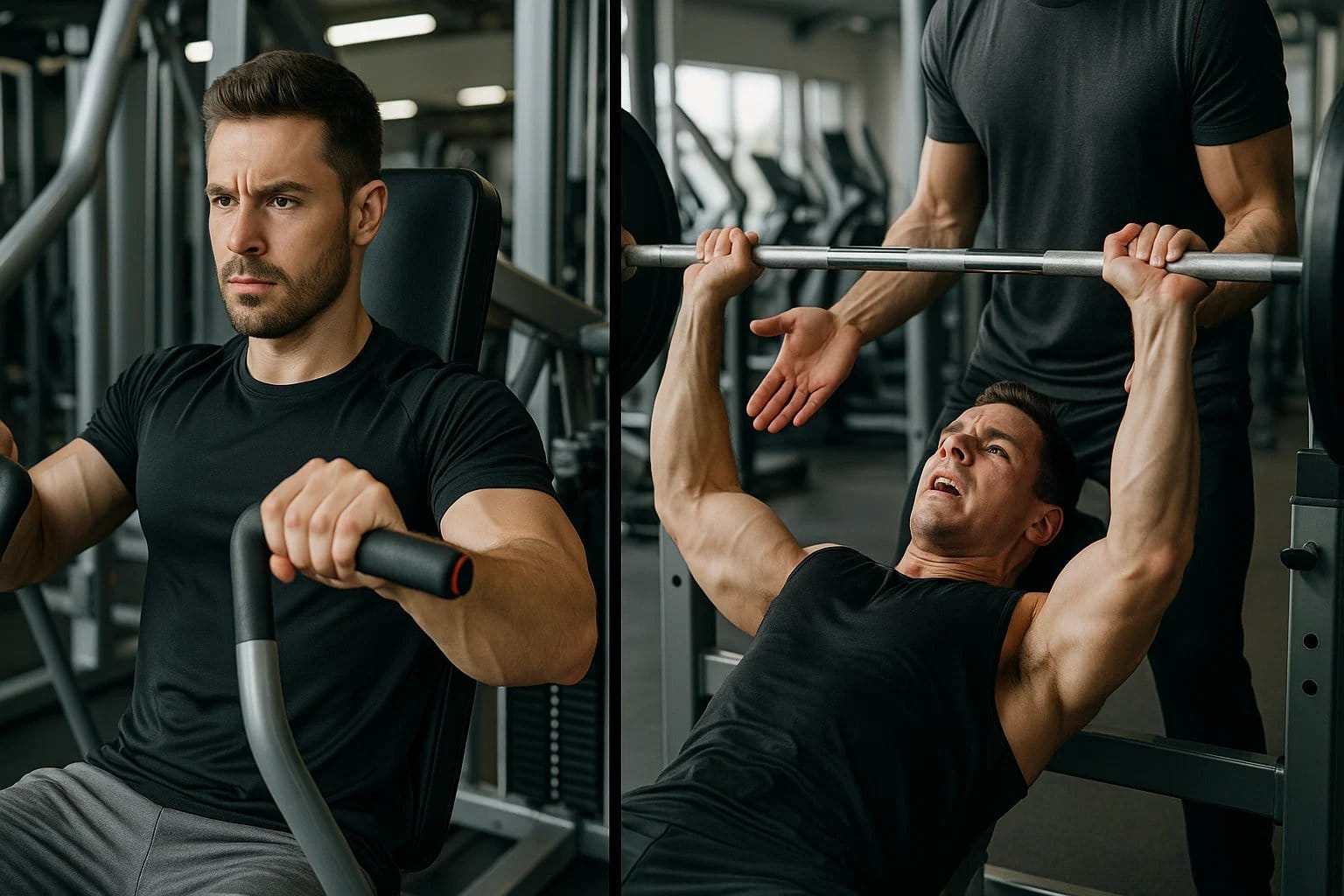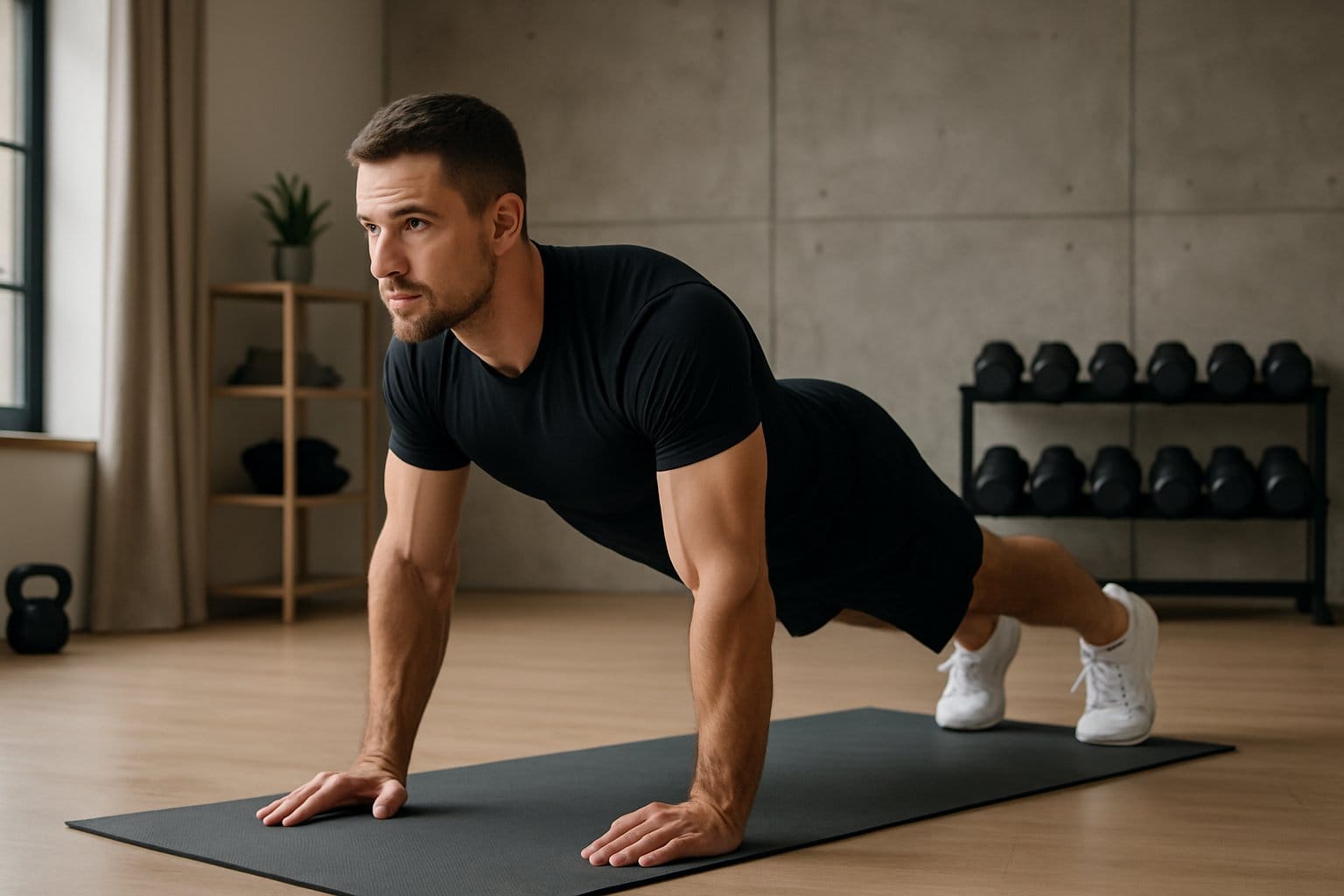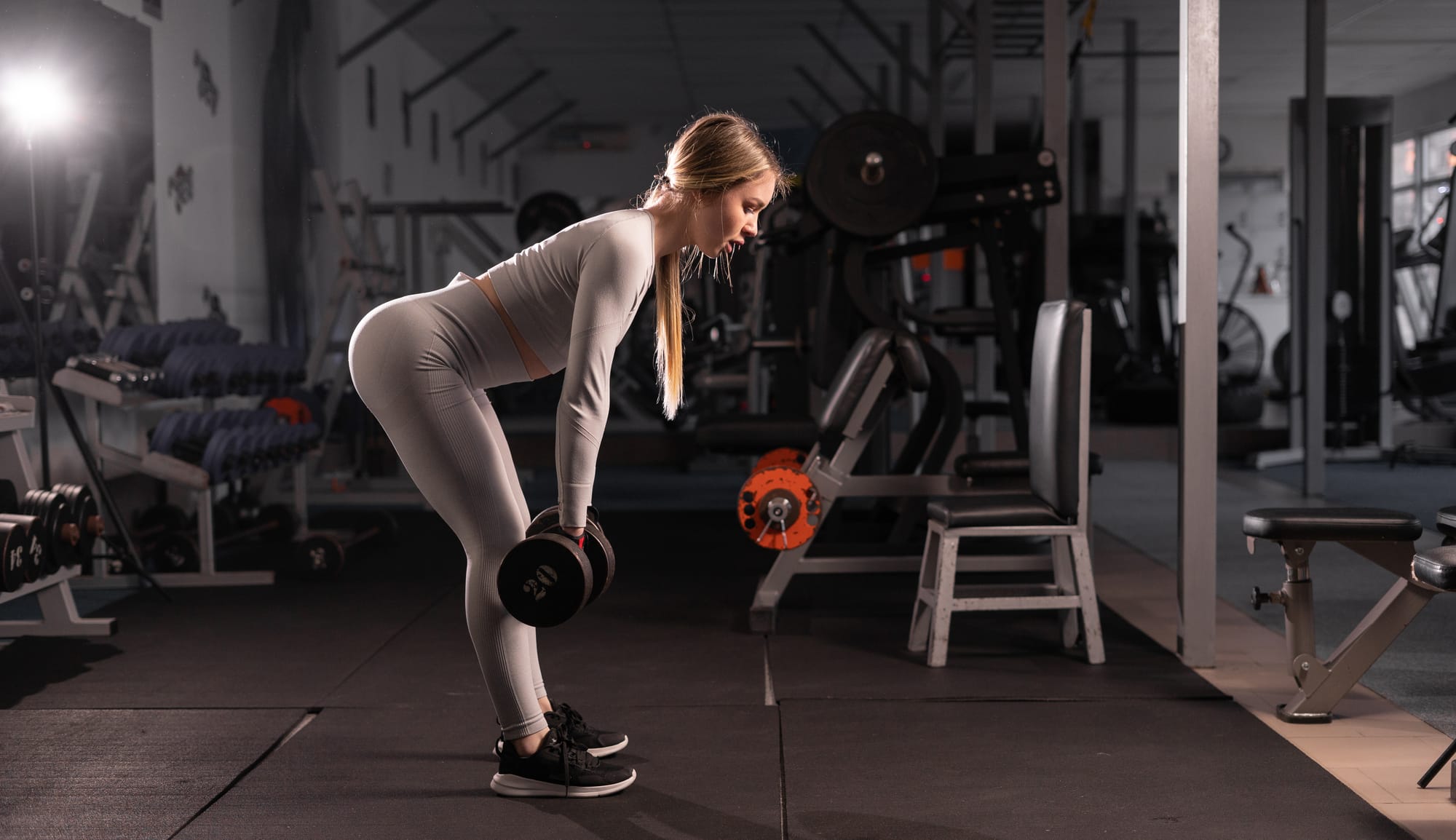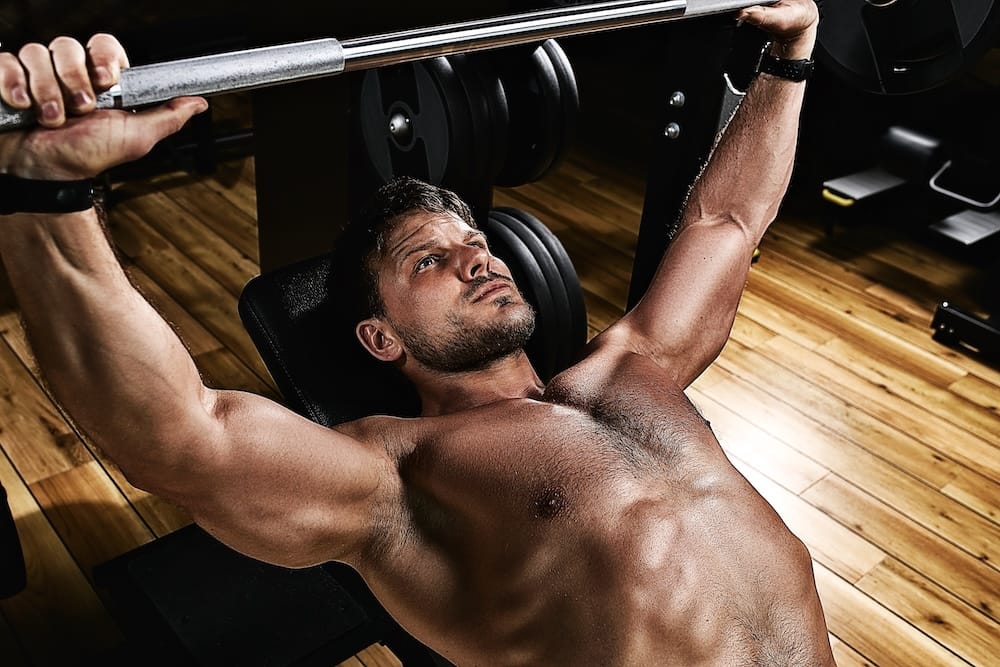Neutral Grip Pull-Ups: Benefits and Variations
This is a guide to neutral grip pull-ups. Find out which progressions you can work through to master your neutral grip pull-ups.
Pull-Up Grips: Pull-Ups vs. Chin-Ups
When we talk about pull-ups, many people have a tendency to get their language confused.
We often mistake this move for a chin-up.
When you're doing chin-ups, you're working a pull-up with an underhand grip trying to get your chin up to the bar.
Flip your grip around to an overhand. Now, you have a traditional pull-up. We call this a pronated grip.

We could technically call a chin-up a supinated grip pull-up because the hands are facing toward you.
So what comes in between? This is where neutral grip pull-ups come in.
About Neutral Grip Pull-Ups
In a neutral grip pull-up, the palms of your hands face in toward each other. Neutral grip is the spot in between supination and pronation of your wrists.
This means you'll have to tweak your equipment a little more than you would have to with a chin-up or a traditional pull-up.
For neutral grip pull-ups, you need to use high bars that run perpendicular to your body rather than parallel.
This lets you bring your hands to face each other to work your pull-ups with a neutral grip. Usually, commercial gyms will offer at least some equipment with handles that allow you to work on pull-ups with a neutral grip.
In gymnastics gyms, hanging rings are commonly used for this move or for muscle-up progression exercises.

Benefits of Neutral Grip Pull-Ups
Easier on the Shoulders
If you struggle with your shoulder mobility, neutral pull-ups can be a great in-between to put less stress on your shoulder joints.
Keeping your shoulder joints safe is extra important.
Your glenohumeral joint (the shoulder joint) is the most mobile in the entire human body.
It has a great capacity for movement, but it is also easily injured if you don't strengthen and take care of it properly.
In fact, the glenohumeral joint is the most common joint of your body to dislocate. It accounts for approximately half (about 45%-50%) of total joint dislocations in the human body.
Impingement (usually an injury to the rotator cuff) is also a common problem for shoulders. Although this field needs more study, wide-grip pull-ups were found to come with a higher impingement risk.
Despite this, it’s important to be careful of shoulder injuries in any training variation.
If you're too weak for a full pull-up, a neutral grip pull-up is a fantastic in-between move. That way you can work up to a conventional pull-up. A neutral grip pull up vs. pull up may be a good way to build shoulder strength first.
Builds Confidence
Working away at pull-ups with little to show for it feels discouraging. If you practice a simpler variation, like the neutral grip pull-up, it can feel easier to make progress. This gives you more confidence.
Once you’re able to master neutral grip pull-ups, you’ll feel more confident to try attacking the traditional version.
How to do Neutral Grip Pull-Ups
If you're working on neutral grip pull-ups at the gym:
- Set-Up: Find a pull-up bar or use the top of a power tower. Use a station that offers you a set of perpendicular high bars with no parallel bar in the middle.
- Grip: Once you find your station, lift your arms, twisting your palms inwards to face one another. Grasp the handles firmly, bracing your core muscles with your arms extended.
- Activation: Driving out of your back and shoulders, bend your elbows and activate your forearms to lift your body up and off the ground.
- Elevation: Keep your chest proud, and continue to follow through the movement until your chin comes into a line with your fists. Pull up slightly further through the chest, aiming to make contact with your chest to where the bar would hypothetically sit.
- Descent: Hold this position for a moment at the top. Slowly start to extend your elbows and lower your body back down to the starting position.
Be careful here not to drop or dump into your shoulders. If you don't control the movement here, you risk shoulder injuries on the eccentric (the “down”) part of the move.
- Reps: Repeat for three sets of 10 to 15 reps.
Tips and Tricks
To improve your pull-up technique, it's a good idea to train this move two to four times per week. If pull-ups are your main move for the day, aim for three to four sets of 10 to 15 reps.
When training another muscle group, add pull-ups in. Even if you're training legs, throw a small set of pull-ups into your gym day. We recommend three sets of five or six reps.
Moves like pull-ups and push-ups are unique. It's a good idea to train them more often than less, provided you're not suffering from any injuries. Unlike squats and deadlifts, you can work on pull-ups and push-ups pretty much every day.
But if you're not doing them as a main move, scale your number of reps back.
Think about pull-ups in terms of the total amount of reps that you do over a week, rather than just one day.
You want to keep this number pretty high if it's a key goal for you to improve at this move.
Neutral Grip Pull-up Progressions
Dead Hangs
When we train pull-ups, many of us overestimate our grip strength and the simple ability to hold our full weight up on a pull-up bar.
Dead hangs are how you can ace this! But be forewarned: just because they’re simple, doesn’t mean they’re easy.
To do a dead hang:
- Set-Up: Find a pull-up bar or pull up handles (if you’re training specifically for neutral grip, use this grip during your dead hangs).
- Grip: Extend your arms with your palms facing together to grab your bars.
- Ascent: Keeping your arms straight, lift your body off the ground to hang from your bar. Don’t bend your elbows.
- Time: Hold for 30 seconds, then drop down and rest. Aim to practice this move so you can work up to a one-minute hold (or more!).
- Reps: Try 3 sets of 30 seconds each to start.
Australian Pull-Ups
You may know them as ring rows if you perform them with hanging rings, but you can also do Australian pull-ups with TRX straps or lower bars.

The Australian pull-up variation works like a negative pull-up, only your body is on an incline.
This takes some of the difficulty out of the movement and is a great starting point for beginners.
To perform Australian pull-ups:
- Set-Up: Grab a set of hanging Rings or TRX straps set to an anchor point. Grasp the handles with your hands facing toward each other in a neutral grip.
- Motion: Scoot your feet out and away from you. Slowly bring your body into a diagonal position to take the slack out of your straps.
- This will support your body. Keep your elbows bent. Brace your hands near your rib cage, holding your body up.
- Descent: Use your strength to resist dropping your body. Slowly extend your elbows and lengthen your arms to lower your body down further on the diagonal.
- Ascent: From the bottom of the move engage your back core and shoulder muscles and slowly reverse the descent by bending your elbows to pull your body back up to the starting position. Hold here for a moment then repeat for reps.
- Reps: Continue this move for three sets of 10 to 15 reps.
Pro Tip: Like with the full neutral grip pull-up variation, we recommend applying the same training frequency to the Australian pull-up if you're looking to increase your pull-up reps.
Negative Pull-Ups
A negative variation trains only the “down” portion of the pull-up. This puts the focus on the eccentric part of the move, or the point where your muscle lengthens.
It sounds counterintuitive, but training negatives may create more damage to your muscles.
This is not a bad thing, we promise!
Muscle damage is what it takes for your muscles to grow. More muscle damage (unless it’s to the point of injury) means more muscle recovery.
This signals your brain to repair your muscles and build them up stronger.
To do a negative pull-up:
- Set-Up: Grab a block or box and set it up underneath your pull-up bar. Step up to the box.
- Grip: Grab the bar handles in a neutral grip and jump your body off the box to the top of the move, so your chin is sitting in line with your hands (where a bar would sit in a traditional pull-up) and your elbows are bent.
- Descent: Engage your back and core muscles to lower your body down from the pull-up position down to a full dead hang.
- Reps: Repeat for 3 sets of 10-15 reps.
Band-Assisted Pull-Ups
@austindunhamfit explains why skipping the pull-up machine might make a better choice if you’re looking to get the same muscular activation as a full pull-up.
For beginners looking to work on their strength before getting into a full pull-up, band-assisted pull-ups are one of the best moves you can try.
This variation lets you work with part of your body weight not all of it. This version mimics the path of motion of a traditional pull-up more closely than an assisted pull-up machine would.
- Set-Up: Find a pull-up bar with neutral grip handles and a resistance band. The band weight should be heavy enough so that you can perform 10-15 reps. Find a box or block to step onto if your pull-up bar is high.
- Band Position: Hook the band around your foot or your knee, whatever is most comfortable for you. Keep in mind that a different band position can affect the amount of weight you’re lifting and your ability to keep your body straight.
- Grip: Grab your bar handles in a neutral grip.
- Activation: Driving out of your back and shoulders, bend your elbows and activate your forearms to lift your body up and off the ground
- Elevation: Keep your chest proud, and continue to follow through the movement until your chin comes into a line with your fists.
- Descent: Hold this position for a moment at the top, then slowly start to extend your elbows and lower your body back down to the starting position. Be careful here not to drop or dump into your shoulders. If you don't control the movement here, you risk shoulder injuries on the eccentric part of the move.
- Reps: Repeat for three sets of 10 to 15 reps.
All these exercises are great to work in if you are trying to get into a neutral grip pull-up.
Pro Tip: Apply the progressions to your traditional pull-ups and chin-ups too! No matter which grip you prefer, using this progression technique is a great way to get your first pull-ups or chin-ups.
Remember to master each step of the progression before you increase the difficulty level too quickly.
Time in each progression works differently for everyone. As a guideline, once you can perform 3 sets of around 15 repetitions comfortably and consistently at one level, it may be time for you to work up to the next.
That being said, if you find a jump from one progression to another too challenging, there’s no shame in working back down and seeing where your sticking points are.
Pull-Up Sticking Points
What is a sticking point? The National Strength and Conditioning Association defines it as “the weakest point in the range of motion of an exercise.”
It’s the point at which you feel like your motion is inhibited or blocked in a way that keeps you from progressing to the next step of the move.
Here are a few of the common sticking points for pull-ups. Which one are you experiencing?
Try to be mindful of your sticking points while you work through these progressions. Knowing where you’re weakest lets you strategize and push through any plateaus.
Why Should You Train Negatives?
Negatives are one of the best ways to work around sticking points (which is why we included them!), but everyone’s body works differently.
A common issue people new to bodyweight workouts have is a lack of core strength for pull-ups.
If this is you, simply training moves like push-ups, planks, dead hangs or hanging knee raises can be a great way to work on your core strength and stability before you attack your neutral grip pull-ups.

Neutral Grip Pull-Up— Muscles Worked
Lats
Your latissumus dorsii, or lats are the biggest muscles in your back. They help to move your upper arms and shoulders. For any pulling or climbing move, your lats engage to help you use your strength to raise your body.
Biceps
The biceps or biceps brachii sit on the insides of your arms. Biceps help you flex your elbows. In a pull-up, you’ll need to contract your biceps to get your body from a low-hanging position to the top of your bar.
Although most of us can improve our bicep strength, not all biceps are created equal. Do you have bad bicep genetics? Try the linked test to find out!
Core
The abdominal muscles of your core are hard at work no matter which pull-up variation you choose.
What these muscles do in a pull-up is help you to stabilize your body in the air. When we talk about pull-up form, one of the main issues newbies have when trying to get their first pull-up is swinging their bodies around.
If you don't have a strong core, you'll probably be a little bit shaky in your pull-ups and tend to swing. This brings you out of the straight path of motion that you should be aiming for when it comes to doing pull-ups.
Trapezius
The trapezius muscles or traps are also one of the main players when it comes to doing a pull-up. Traps mainly work to stabilize your shoulders during this move.
Deltoids
Deltoids (“delts”) are the shoulder muscles that let you lift your arms. In neutral grip pull-ups, the work can be more delt-dominant than using a pronated or supinated grip.
If you think you may have bad shoulder genetics, you can work on exercises like a front delt workout to build strength in this area.
Grip
Finally, grip strength is potentially your most important player when it comes to pull-ups. It often goes overbooked, but strengthening your hand and wrist muscles is one of the best ways to improve your capacity for pull-ups.
When you're working on this move, you can even think about getting a grip strengthener, which you can order from Amazon.
The Takeaway
Neutral grip pull-ups are one of the best pull-up variations you can train. If you're new to pull-ups or have shoulder mobility issues, they can be a more accessible way to get pull-up reps in.
Neutral grip pull-ups feel easier than either traditional pronated grip pull-ups, or supinated pull-ups (aka, chin-ups).
Neutral grip pull-ups work all the same muscles as a traditional pull-up. This includes your lats, biceps, pecs, triceps, and core.
Because this move works for so many major muscle groups, the neutral grip pull-up variation is a phenomenal total body exercise.
Neutral Grip Pull-Up Variations: Recap
Like traditional pull-ups, neutral grip pull-ups are a great exercise with a lot of equipment variations. You can switch up, including using rings, doing it outside, or adding a weight or vest once you advance.
Some pull-up stations may not have the right handles for you to do this variation.
If you train your pull-ups at home with a bar, you can buy handle attachments online that allow you to use a neutral grip.
Work through the progressions one by one if you want to master this move. Remember to keep your shoulders safe, and don’t be scared to drop down to an earlier progression if you’re struggling with strength.
Pull-ups are a fantastic compound movement for a full body workout. When you do pull-ups with proper form, they can be a great full body exercise.
On top of your strength training workouts, adding pull-ups with neutral, underhand, or overhand grip to your workout program is a great way to increase muscle mass. You also build skeletal muscle.
Remember to stretch and take care of your muscles after your pull-ups. This is a lot of exertion, so you’ll need to recover well.
It’s a good idea to get informed on stretching techniques or take a look at options like muscle scraping for healing and taking care of sore muscles.
And remember to keep your diet on track when you train. Adequate protein or even supplements like creatine can be good options. (Can you even mix protein powder and creatine?).
Sleep is also important for muscle growth and overall health so make sure you’re sleeping well at night. Otherwise, you may risk falling asleep for a nap after a workout!
All these hacks to improve your neutral grip pull-ups should have you set up for success.
References:
Abrams R, Akbarnia H. Shoulder Dislocations Overview. [Updated 2023 Aug 8]. In: StatPearls [Internet]. Treasure Island (FL): StatPearls Publishing; 2024 Jan-. Available from: https://www.ncbi.nlm.nih.gov/books/NBK459125/
Chang LR, Anand P, Varacallo M. Anatomy, Shoulder and Upper Limb, Glenohumeral Joint. [Updated 2023 Aug 8]. In: StatPearls [Internet]. Treasure Island (FL): StatPearls Publishing; 2024 Jan-. Available from: https://www.ncbi.nlm.nih.gov/books/NBK537018/
Kompf, J., & Arandjelović, O. (2016). Understanding and Overcoming the Sticking Point in Resistance Exercise. Sports medicine (Auckland, N.Z.), 46(6), 751–762. https://doi.org/10.1007/s40279-015-0460-2
Padulo, J., Laffaye, G., Chamari, K., & Concu, A. (2013). Concentric and eccentric: muscle contraction or exercise?. Sports health, 5(4), 306. https://doi.org/10.1177/1941738113491386
Prinold, J. A., & Bull, A. M. (2016). Scapula kinematics of pull-up techniques: Avoiding impingement risk with training changes. Journal of science and medicine in sport, 19(8), 629–635. https://doi.org/10.1016/j.jsams.2015.08.002
Related articles


Get fit with Flex
Build muscle & lose weight fast for free.
Available on iPhone + Apple Watch
